Mystery books are the ultimate escape. They deliver heart-pounding tension and brain-boggling conundrums that readers can navigate from the safety of their couch. The mystery genre was birthed in the mid-19th century, and from there it has taken a pretty solid shape that guides us in understanding just what a classic mystery is. With a logical sequence of events, believable-but-not-blatant clues, and a healthy does of red herrings, these mysteries are classics for a reason.
If you can't keep away from a classic, then we've got you covered. Compiling all our coverage of mystery novels, we've collected hundreds of classic mystery novels for you right here in one convenient place.
Classic Mystery Novels Everyone Should Read
The mystery genre might be younger than you think, but there's no question that some titles have endured the test of time. From Arthur Conan Doyle to Agatha Christie, these authors just know how to write a compelling and satisfying plot.
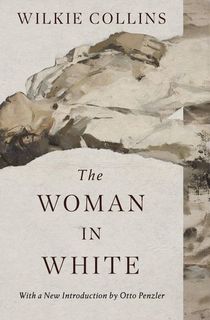
The Woman in White
Written in 1859, this is arguably the world’s first true mystery novel. The Woman in White is a real Victorian blockbuster, featuring classic ingredients: fog-wreathed country houses, insanity, dastardly marital plots involving family fortunes, and a piece of Alfred Hitchcock-style identity swapping.
Collins’ villain is one of the greatest in classic crime fiction, the portly, sharply witty Count Thurso who keeps his pet mice in his pocket. The count is a master criminal, but finds himself up against an unlikely—for the period—foe in the fabulous Marian Halcombe, a tough, intelligent heroine who has no truck with Victorian notions of femininity. If there had been airport bookstores in the 19th century, they’d have been selling this by the ton.
The Best Classic Mystery Series for Insatiable Readers
If it ain't broke, don't fix it. Similarly, if you love a story, there's nothing better than diving into a long series full of bangers. Whether it's a single main character you love or a specific writer's style, it's just great to know that you're in safe hands… even if the characters aren't.

The Murder of Roger Ackroyd
A former Brussels policeman who fled to Britain as a refugee after the German invasion of his country in 1914, Hercule Poirot is one of mystery fiction’s best-loved and most enduring detectives.
With his mustache, his dandyish clothes, and theatrical air, Dame Agatha Christie’s little Belgian has a strange career that doesn’t really begin until he retires to grow vegetables in 1929 (by the time he reaches his final case in 1975, he’s likely about 110 years old, though he remains ageless).
The central figure in 33 novels, two plays, and more than 80 short stories, Poirot’s most celebrated—and filmed—cases are Murder on the Orient Express and Death on the Nile.
While both those novels showcase Dame Agatha’s flair for constructing knotty whodunnits, the dapper detective’s twinkling gifts are shown to even better advantage in The Murder of Roger Ackroyd (with its celebrated surprise ending) and the less well-known, but equally superb, Five Little Pigs, in which the brilliant Belgian ingeniously reconstructs a crime that occurred 16 years earlier.
Find more of the best classic mystery series here!
Lesser-Known Books by Your Favorite Classic Mystery Authors
Be your own sleuth by discovering niche titles by mainstream authors. Sherlock Holmes fans can find another side to Sir Arthur Conan Doyle, Hercule Poirot fans can learn more about Agatha Christie's canon, and more.

The Mystery of Cloomber
This 1888 mystery novella came out between the first two Sherlock Holmes novels. It’s the only mystery Conan Doyle wrote that doesn’t feature the famous consulting detective.
The setting and plot, though, are certainly worthy of the pen of Dr. Watson. The story centers on a gloomy country house on the Anglo-Scottish border occupied by the reclusive General Heatherstone, a former army officer who becomes strangely nervous whenever the month of October rolls around.
Our amateur sleuth, Scotsman John Fothergill West, is understandably intrigued. His interest becomes even more intense after the arrival in the area of some Indian Buddhist priests. Fans of Holmes will enjoy picking out the clues to what sometimes reads like a dry run for The Sign of the Four.
Classic Mystery Authors to Read Based on Your Favorite Contemporaries
Like every genre, mystery continues to build upon a legacy of authors who came before. You might not even realize that your favorite contemporary author is paying homage to someone else's work, but it's always fun to see where that first spark of inspiration came from.

An Unkindness of Ravens
If you’re a fan of Lisa Gardner and her many thriller series, then you’ll love Ruth Rendell.
In An Unkindness of Ravens, upon the insistence of his wife, Inspector Wexford looks into the disappearance of a neighbor's husband. Despite the initial suspicion that it was another predictable case of an affair between a middle-aged man and a younger woman, Wexford must undergo a different type of investigation when his neighbor is found dead.
And when another man is found stabbed in his car, Wexford knows these two murders are no coincidence.
Classic British Mystery Books
From 221B Baker Street to all of the pretty little villages hiding a deadly secret, there's something about a British mystery that just hits different.
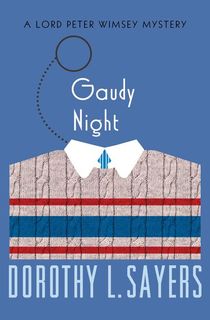
Gaudy Night
The fear of the reputational damage that will be done to a posh Oxford College by an outbreak of vandalism, obscene messages, and poison-pen letters lies at the heart of this tightly-knotted 1935 mystery from one of Britain’s Queens of Crime. The Dean calls in former student Harriet Vane to investigate.
Harriet is soon joined by her on-off boyfriend Lord Peter Wimsey. Working together the pair foil a plot to drive a vulnerable student to suicide before pouncing on the perpetrator.
Sayers is at her best here, gleefully pointing up the sort virulent class snobbery that can drive a person to mad fury.
Find more classic British mystery books here!
The Best Classic Mystery Characters of All Time
Sherlock Holmes. Hercule Poirot. Philip Marlowe. We know the names, and for good reason. Clever, often eccentric, and resourceful, these characters know how to track down the truth.

Fer-de-Lance
Rex Stout’s gloriously eccentric private eye Nero Wolfe—who made his first appearance in 1934—is the very opposite of an action hero. Wolfe is in late-middle age, weighs 272 pounds and is reluctant ever to leave the made-to-measure armchair in his luxurious New York City brownstone. Instead he relies on others to do his legwork, while he concentrates his brilliant mind on the crime at hand.
An enthusiastic gourmet, champion orchid-grower, expert darts player, and a connoisseur of beer fifty years before hipsters discovered hop varieties, Wolfe is always entertaining company—the private detective you’d most like to have dinner with (especially if it’s prepared by his personal chef, Fritz Brenner).
Find more of the best classic mystery characters of all time here!
The Best Classic Mystery Sidekicks
Every Sherlock needs his Watson, and every mystery story is more compelling with a good sidekick. Often, sidekicks are the best storytellers, because they have a perfect view of all the good stuff and a proper appreciation for the complexities of a case.

The Murders in the Rue Morgue
C. Auguste Dupin’s unnamed sidekick is the first in all mystery fiction and arguably the most important. Without him where would we be? In Edgar Allen Poe’s three genre-creating tales of detection featuring Dupin, it’s the eccentric French sleuth’s anonymous Parisian housemate who chronicles events at the Rue Morgue and elsewhere. He also introduces us to the detective’s logical methods and remains understandably awestruck with wonder as Dupin unravels apparently unsolvable crimes. Aside from his passion for antiquarian books, we learn little about Poe’s narrator. He’s possibly the biggest mystery in the trio of cases he writes about.
Find more of the best classic mystery sidekicks here!
Classic Mystery Novels Featuring Kid Sleuths
It takes moxie to solve a mystery with little more than intuition and your own friends. Kid detectives don't have the resources of a big police department or years of on-the-job training, but they have plenty of heart.

Password to Larkspur Lane
There's no girl detective more famous than Nancy Drew. In fact, she may be the most enduring child detective in fiction.
When a wounded homing pigeon bears the strange message, "Blue bells will be singing horses," Nancy finds herself in the center of a dangerous case. There's an elderly woman being held prisoner in a mansion somewhere, and Nancy must figure out where so she can free her. But Nancy is forced to multitask when her friend, Helen, asks her to look into the mystery of an eerie blue wheel of fire that appears outside her grandparents home each night.
Ciphers in Classic Mystery Tales
Patterns and puzzles take center stage in these mysteries. Can you solve them before the lead detective does? There's only one way to find out.
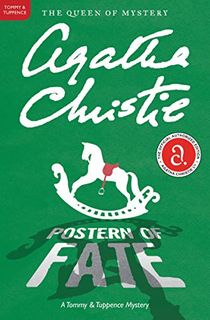
Postern of Fate
Featuring two of the Queen of Crime’s less celebrated detectives, Tommy and Tuppence Beresford, Postern of Fate was published in 1973. It was the last novel Christie completed. The once sprightly Beresford’s are now in their seventies, retired, and living in a seaside resort. Life is dull and predictable until one day, Tuppence discovers a coded message in an Edwardian children’s book. This gets the aging couple back into the sleuthing game and they are soon trying to crack a cold case murder dating back to World War I that involves espionage and poison.
Find more ciphers in classic mystery tales here!
Classic Mystery Books Set in Department Stores
There's more of these stories than you might think! For some reason, mystery writers seem to love setting their deadly plots inside swanky department stores.
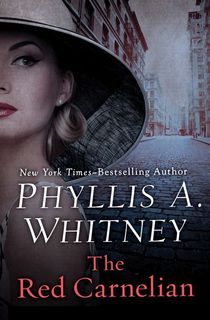
The Red Carnelian
Originally published as Red is for Murder, Phyllis A Whitney’s 1943 mystery – her first book for adults - is set in Cunningham’s, a gigantic Chicago department store. When store sign-writer Linell Wynn’s ex-boyfriend Michael Montgomery is found dead is a display window, she’s immediately a prime suspect. However, it soon emerges that there are plenty of people working alongside her who also have reason to want Montgomery stiffed. Whitney was a terrific writer who published over 100 titles during her lifetime despite not starting until she turned forty. Her flair for creating tension is shown to good effect in The Red Carnelian. The scenes that take place in the empty, echoing and shadowy out-of-hours department store are genuinely chilling.
Classic Crime Books
Confused about the difference between a mystery book and a crime book? You're not alone. In fact, there's not a clear line between them. However, generally speaking, while mystery books fall under the umbrella of crime fiction, crime encompasses other genres, too, including thrillers. Where a mystery book might focus more on following the clues to work out motive, means, and opportunity, crime fiction often focuses more on the criminals and why they were led to make the choices that they did.
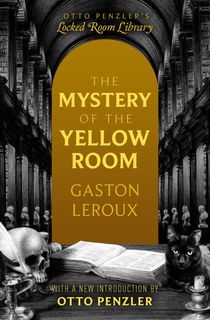
The Mystery of the Yellow Room
The author of The Phantom of the Opera may not have invented the notion of the locked room mystery (Poe had, inevitably, gotten there first) but this 1907 novel did much to popularize a concept that would go on to become a stand-by of crime writing. Leroux not only describes the crime—in which a criminal disappears, Houdini-like, from the locked yellow room of the title—he also provides detailed plans and diagrams, challenging the reader to solve the puzzle faster than his amateur investigator, newspaper reporter Joseph Rouletabille. The intricate plot involves a mad scientist who is working on what sounds like a prototype of the Star Trek teleporter, a secret marriage, and a criminal mastermind in disguise. Little wonder the novel was praised as “a classic” by Agatha Christie’s famous investigator Hercule Poirot.
Find more classic crime books here!
Long-Lost Crime Classics
Some of the best examples of crime fiction went out of print in the decades since their original publication. However, due to modern technology, some of the greats are available once more. Reading these previously unavailable books is like digging up that final, all-important clue.

That Affair Next Door
Long before Nancy Drew or Miss Marple were on the scene, Miss Amelia Butterworth was sniffing out clues and catching criminals red-handed. That Affair Next Door centers on suspicious deeds in Butterworth's own neighborhood. Late one evening, the amateur sleuth observes suspicious activity at her neighbor’s house. The next morning, a young woman is found dead, having been stabbed with a hat pin and crushed beneath a cabinet. Veteran Detective Ebenezer Gryce is assigned to the case. At first, he butts heads with the inquisitive Miss Butterworth, but he soon learns that she has superior deductive skills, and they end up working together to solve a perplexing whodunit.
"This inaugural volume in the Library of Congress Crime Classics series, featuring the first woman sleuth in a series, is a must for genre buffs." —Publishers Weekly, starred review
Find more long-lost crime classics here!
The Best Villains in Classic Crime Books
Just like every good detective needs a sidekick, it's also essential to get that villain right—especially in crime fiction. A really good villain can keep you up at night… or make you think that they were really the hero all along…
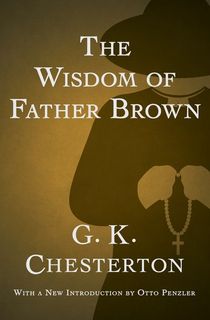
The Wisdom of Father Brown
The enemy and later friend of G.K. Chesterton’s priestly sleuth Father Brown, Hercule Flambeau, is Europe’s greatest jewel and art thief. He’s suave, handsome, romantic, flamboyant, and, well, very, very French—a Gallic counterpart to Danny Ocean. Unable ever to actually catch the crafty Flambeau (the name means “Flaming Torch”), Father Brown instead locates a conscience hidden behind the twinkling charm and persuades the thief to give up crime and become a detective instead. Flambeau being good is far less interesting than him being naughty, so society benefits, if not the reader. Agatha Christie was so impressed by Flambeau that some believe she took him as the inspiration for Hercule Poirot.
Find more of the best villains in classic crime books here!
The Best Senior Detectives in Classic Crime
Just like there's room for a kid sleuth on your bookshelf, there's something charming about the old hat solving one more crime. Experience is often the best teacher, and these detectives have seen every trick in the book.

The Old Man in the Corner
Baroness Emmuska Orczy’s entertaining creation is the original armchair detective, never straying (or so it seems) from his seat in the corner of a London café. He is elderly, thin as a stick, has his remaining hair swept over a bald spot, and wears a heavy overcoat, which still doesn’t stop him from shivering and sniffling. He’s called Bill Owen, but that name is seldom used. The Baroness usually designates him simply as The Old Man in the Corner. Owen made his debut in 1901 and would appear in 24 short stories, solving crimes across London with the help of reporter Polly Burton.
Find more of the best senior detectives in classic crime here!
Classic Australian Crime Reads
Snakes, scorpions, sharks… Australia is already full of a million things that can kill you. Why not add one more? Go Down Under and take on the elements with these Australian crime reads.

Cocaine Blues
Published elsewhere as Death by Misadventure (USA) or Miss Phryne Fisher Investigates (UK), Kerry Greenwood’s classic series opener introduced the world to Phryne Fisher, an aristocrat, private investigator, and bonne vivante making the most of life in 1920s Melbourne. The character has gone on to feature in dozens of books, a popular TV series (currently available on Netflix), and a feature film: 2020’s Miss Fisher and the Crypt of Tears. The book that started it all, Cocaine Blues sets the template for what’s to come—vivid depictions of early 20th-century luxury, provocative examinations of gender roles and social norms, and above all, riveting adventure propelled by twists and turns aplenty.
Find more classic Australian crime reads here!
Classic Whodunits
A good mystery will have you asking all sorts of interesting questions, but often, nothing is more important than “Who?” Suspects abound in a proper whodunit, and there's nothing to do but sort through them and find the truth.
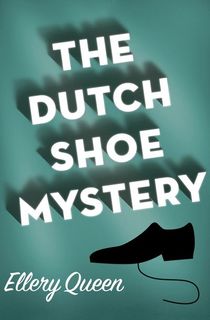
The Dutch Shoe Mystery
What better way to top this list than with a whodunit from Ellery Queen? After all, Queen is “the most important American in mystery fiction,” according to Edgar Award-winning editor Otto Penzler. Ellery Queen is actually the pseudonym for cousins Frederic Dannay and Manfred Bennington Lee, who co-wrote dozens of crime fiction books together; it’s also the name of their most popular fictional character and the star of The Dutch Shoe Mystery.
As the son of a policeman, Ellery Queen knows a thing or two about crime scenes. And this one is the most baffling he’s encountered yet: an heiress is scheduled for surgery, but before she’s wheeled into the operating room, doctors find her strangled to death on her gurney. Who would do such a thing, and why?
Find more classic whodunits here!
Books From the Golden Age of Detective Fiction
The Golden Age of Detective Fiction is primarily defined as taking place in the 1920s and 1930s and are often defined by their cozy style. While the Golden Age style grew less popular during World War II, it's enjoyed a renaissance and continues to be well-read today.
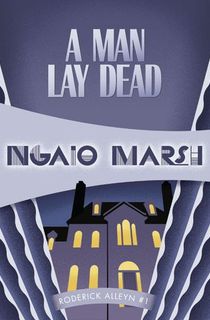
A Man Lay Dead
Published in 1934, this is Marsh’s first novel and first work to feature Chief Inspector Roderick Alleyn. The inspiration came to her after reading a detective story by Dorothy Sayers, and Marsh wondered whether she could hold her own in the genre. Little did she know that she would come to be remembered among their ranks as a Queen of Crime, and that this freshman effort would be adapted into a British television series, The Inspector Alleyn Mysteries.
The plot of A Man Lay Dead concerns itself with a party game that was popular at the time, in which one guest is selected to be “the murderer” and chooses a victim. The lights go out, and when they come back on, the remaining guests are tasked with guessing who the murderer is. It’s all in good fun, but when Alleyn plays while on a weekend getaway at a country house, the seemingly harmless game ends in an actual murder. A fun puzzle reminiscent of Clue, A Man Lay Dead is a great introduction to Marsh’s work.
Forgotten Female Mystery Writers from the Golden Age
The Queens of Crime (Agatha Christie, Dorothy L. Sayers, Margery Allingham, and Ngaio Marsh) earned their stripes during the Golden Age of Detective Fiction, but they weren't the only women of note. Plenty of other writers deserve love for their work during this time, too.
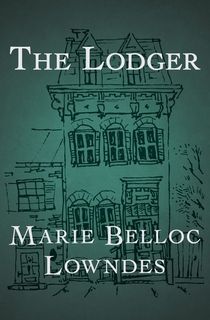
The Lodger
Marie Belloc Lowndes was one of the early pioneers for female crime fiction writers. Her novel The Lodger, which is a fictional retelling of the Jack the Ripper murders, has been adapted countless times for film and radio. The story centers on Mr. and Mrs. Bunting, who are struggling to stay financially afloat. The couple owns a lodging house in London that is their means of survival, but it hasn’t gotten a lot of attention. When word breaks loose that a murderer is on the street, a mysterious man named Mr. Sleuth checks into the lodging. The Buntings have their suspicions about the fellow, but how far are they willing to suppress their instincts for the sake of cash?
Classic Detective Fiction Novels
Within the mystery genre, detective books primarily focus on the sleuths who must use deduction and investigation to find a solution.
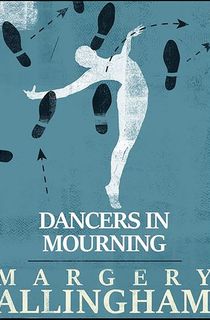
Dancers in Mourning
Margery Allingham’s mysteries featuring gentleman detective Albert Campion initially drew comparisons to Sayers’ Wimsey novels. Allingham soon broke free from such comparisons, however, rising to become one of the most versatile authors of the Golden Age of Detective Fiction.
Dancers in Mourning, first published in 1937, is the author’s eighth novel to feature Albert Campion. Someone is playing pranks on entertainer Jimmy Sutane, causing a great deal of stress for the music hall performer as he rehearses his latest show. Campion is tasked with finding the prankster when the backstage mischief takes a deadly turn. An aging starlet in Sutane’s orbit turns up dead. The death appears accidental, but Campion suspects otherwise. Can the gentleman detective solve this mystery before the stage lights go out for good?
Find more classic detective fiction novels here!
Classic Detective Novels from Belgium and the Netherlands
Interestingly, some of the best Belgian and Dutch mystery writers (Georges Simenon and Robert van Gulik, respectively) set their stories outside of their home countries. Fortunately, Englishwoman Agatha Christie was compelled by the Low Countries and gave us Hercule Poirot. There's no shortage of other great stories that take place in this region.

Outsider in Amsterdam
In the 1970s, Amsterdam was generally regarded as the San Francisco of Europe—a magnate for hippies, flower children, and the counter-culture. The mood of the city at that time fills the work of Janwillem van de Wetering, a Zen Buddhist who spent a chunk of his life living in a commune in Maine.
Born in Rotterdam, van de Wetering wrote in English about two mismatched cops Detective Henk Gijpstra (middle-aged, happily married with a passion for gin and jazz) and Sergeant Rinus de Gier (younger, better looking with a passion for denim suits and women) who work for the Amsterdam Murder Brigade. They make their debut in this quirky, off-kilter escapade from 1975 which sees the pair investigating a death amongst the long-haired followers of an Eastern cult.
Classic Thrillers Featuring Fierce Women
We haven't even covered thrillers yet! These heart-pumping books often hold some secret or mystery with a solid helping of danger. That's why it's especially satisfying to have someone with a backbone to root for and read about.

Rebecca
In Daphne du Maurier’s masterpiece, an unnamed female narrator is swept off her feet by wealthy widower Maxim de Winter. The narrator feels as if she's living a dream. Upon arriving at the estate, however, she finds herself thrust into the shadow of Rebecca, the first Mrs. de Winter. As she feels herself fading in comparison, the housekeeper senses weakness and begins her own campaign of torment and manipulation. Can the protagonist withstand the mind games and expose the dark truth about Maxim's first wife?
Classic Mystery Short Stories
Anyone looking for a bite-sized mystery, try a short story! They pack all the punch in a fraction of the pages. The long, proud history of mystery short stories includes Edgar Allan Poe, Dorothy L. Sayers, and more.

The Case of Oscar Brodski
R. Austin Freeman pioneered a new type of mystery fiction: the inverted detective story. Tales like “The Case of Oscar Brodski” are divided into two parts. In the first, the reader is given an account of the crime—in this case the murder of a London diamond dealer—that takes in every detail including the name of the killer, his method, and his motivation. In the second half, Freeman’s great criminal pathologist, Dr. John Thorndyke, arrives on the scene, using physical evidence, questioning, and logical deduction to catch the criminal. The fun for the reader is following the process of detection as it takes place. In the masterful hands of Freeman, it’s a remarkably exciting ride.
Find more classic mystery short stories here!
Featured image: Faith Enck/Unsplash








